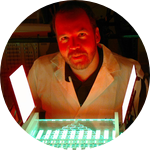About This Project
Sleep refreshes the mind and poor sleep is linked to a variety of neurological and psychiatric conditions. In mammals, sleep is proposed to clear waste from the brain, yet it is unknown whether insect sleep clears the brain. We aim to study this in Drosophila, a popular neuroscience model organism. Our pilot data suggest that, during sleep, flies use their proboscis as a pump to drive clearance. This project studies candidate neural circuits in controlling proboscis motion and clearance.
Ask the Scientists
Join The DiscussionWhat is the context of this research?
Waste clearance is a novel function of sleep where toxins are removed from the brain. In mammals, the recently discovered glymphatic system drives this clearance process. However, how this clearance process is regulated is still poorly understood, partly because the glymphatic system can only be studied with sophisticated techniques available to few labs. Also, it is not known how sleep clears the insect brain.
Recent work in the Allada lab suggests that, during sleep, Drosophila rhythmically extend and retract their proboscis, using it as a pump to facilitate waste clearance. Injury or amyloid beta expression (causing Alzheimer’s disease) increases this behavior while preventing it increases mortality after injury. We now try to establish whether proboscis movements drive clearance.
What is the significance of this project?
It was recently shown that fly sleep drives amyloid beta clearance, similar as in mammals. If proboscis movement clears waste from the fly brain, we can use Drosophila as a model organism to study the mechanisms that drive this process (e.g. how are toxins detected and how are these biochemical signals translated into motor programs driving waste clearance).
We have identified a handful of potential neural circuits that can modulate this motor behavior. We will use genetic tools to test whether these circuits can persistently increase or decrease proboscis extensions and test whether this altered behavior also alters clearance rates of amyloid beta (or fluorescent dyes). Identifying the neural circuits underlying clearance provides us with inroads in studying how this process is regulated.
What are the goals of the project?
Our project has two goals.
First, we will test a battery of candidate circuits for their ability to persistently increase or decrease proboscis extensions, using genetic tools available exclusively in Drosophila.
After generating flies with high (or low) baseline levels of proboscis extensions, we will quantify clearance processes by injecting amyloid beta or fluorescent dye in the fly brain, using a micro injector, and measure how fast these agents disappear over time by dissecting flies at several time points after injection and measure substance levels in the brain and outside the brain, in the hemolymph (fly blood).
We hypothesize that clearance is faster in flies with high baseline levels of proboscis extensions.
Budget
Drosophila lines: We will use the Gal4-UAS system to target candidate neural circuitry controlling the proboscis. The Gal4 is a location marker for a group of neurons while the UAS is an effector. By crossing a Gal4 fly with a UAS fly we create transgenic Gal4>UAS flies where the effector is expressed in the circuitry of interest. As effectors, we will use Kir 2.1, a hyperpolarizing potassium channel, or NaChBac, a depolarizing sodium channel. All lines will be obtained from the Drosophila Stock Center in Bloomington, IN.
Fly husbandry: Flies will be grown on standard fly food in 10CC clear plastic vials.
Reagents:
$199 Amyloid beta protein (Sigma)
$257 3kDa dextran fluorescein (ThermoFisher)
$50 Borosilicate Thin Wall Capillary (Harvard Instruments)
Evan temp pay: During Fall 2016, Evan will work as a part-time research assistant on this project ($9/hr, 120 hr, no fringe)
Meet the Team
Affiliates
Affiliates
Team Bio
We are a group of researchers working in the Center for Sleep and Circadian Biology in the Department of Neurobiology at Northwestern University. We are currently conducting novel research on the mechanisms underlying sleep-driven waste and toxin clearance in the fruit fly Drosophila melanogaster.
Evan Semenza
Evan is a Sophomore undergraduate student in Northwestern University's Weinberg College of Arts and Sciences. He is currently pursuing a Bachelor's Degree in Neuroscience. Evan works as a research assistant in Ravi Allada's Lab in Northwestern's Department of Neurobiology, where his current primary focus is on the modulatory effects of various immune signaling proteins, including the transcription factor NF-kappaB, on sleep-state proboscis extensions and recovery from traumatic brain injury in the fruit fly Drosophila melanogaster.
During the summer months, Evan works in the laboratory of Solomon Snyder at the Johns Hopkins University School of Medicine's Department of Neuroscience, where his research aims to uncover the molecular mechanisms underlying cocaine action and neurotoxicity.
Bart van Alphen
Bart van Alphen is a postdoctoral fellow in the Allada lab at Northwestern, where he works on understanding why we sleep. Until recently, the best answer to that question was: 'Because we get tired'. Using the fruit fly Drosophila melanogaster as a model organism, Bart studies how sleep is regulated by the brain, how sleep affects learning and memory and how sleep can drive waste clearance.
Ravi Allada
Ravi Allada is the Edward C. Stuntz Distinguished Professor of Neuroscience, Chair of the Department of Neurobiology, and Associate Director for the Center for Sleep and Circadian Biology at Northwestern University. Dr. Allada received his M.D from the University of Michigan and completed a residency in Clinical Pathology from Brigham and Women’s Hospital. During his graduate and postdoctoral training, he was a Howard Hughes Medical Institute (HHMI)-National Institutes of Health (NIH) Research Scholar and an HHMI Physician Postdoctoral Fellow. Since joining Northwestern in 2000, the Allada laboratory has discovered new pieces of the core circadian clock including a link to neurodegenerative disease as well as components controlling daily rhythms of sleep and wake. His laboratory has also identified molecular processes underlying sleep including those linked to memory processing. His recent work also extends discoveries in the fly to mammalian systems including the development of diagnostic biomarker signatures in humans. His work has been funded by the NIH, DARPA as well as numerous private foundations including a Burroughs Wellcome Career Award and a NARSAD Young Investigator Award.
Lab Notes
Nothing posted yet.
Project Backers
- 7Backers
- 17%Funded
- $335Total Donations
- $47.86Average Donation


